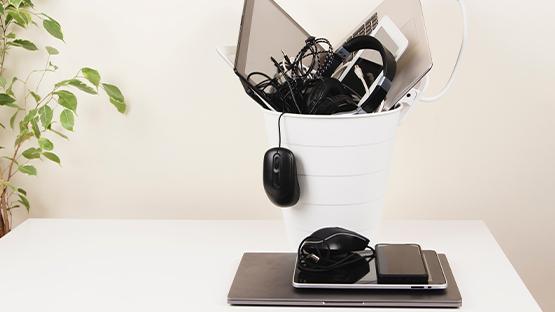Moisture sensors - how do they work and what are they used for?
Ekologia

28 January 2023
The humidity sensor is a device used not only in homes, but also in laboratories or production areas. It contains a special sensor that is used to determine the amount of water in the air in a given area. Fan, humidity sensor - do they have something in common? Find out about the types, operation and use of hygrometers!
Humidity sensors - what are they used for?
An air humidity sensor is a device that is used to determine the degree of humidity in a room. It allows you to control the level of humidity in the air and keep it at the right level, i.e. around 40-60%. The amount of water in the air has a huge impact on how one lives in a particular place and how the walls of a building, for example, react to it. If the humidity is too high, mould and mildew can appear on the walls. In many places, such as production facilities, research centres or in a production warehouse, the humidity must be strictly defined and must be kept constant. This is where humidity sensors come in handy.
Controlling humidity levels is important for health reasons. Too high a humidity level leads, among other things, to problems with the respiratory system. The air feels stale and heavy, which has a negative impact on the wellbeing of the occupants of a damp home or flat. In addition to the already mentioned mould and mildew on the walls, high humidity also has a negative effect on the interior design, including wooden furniture or wallpaper. In order to take good care of your health and the interior of your house or flat, it is worth investing in humidity sensors. Please note that insufficient humidity levels are also detrimental.
How do humidity sensors work?
An air humidity sensor is capable of indicating several types of humidity - absolute, relative or specific humidity. Because humidity is related to temperature, the device that measures these parameters is usually a sensor of the humidity and the temperature that prevails in the room. A humidity sensor in the home is otherwise known as a hygrometer. It can have different dimensions.
Hygrometers can be divided into analogue and electronic ones. The first ones, invented long ago, have a hair inside (once natural, nowadays usually synthetic), which changes its volume under the influence of air humidity. On the basis of changes in hair tension, the device's pointer indicates the air humidity in a given room.
Electronic humidity sensors are more modern devices that also have better accuracy. They contain special sensors that measure the level of humidity in the air. The result is displayed on a screen. This type of hygrometer requires energy to operate, which is not necessary with an analogue sensor.
A very good and smart solution is a humidity sensor with a relay that sends a signal to another device. It allows the hygrometer to be connected to another piece of equipment, such as a fan, after sending a notification. A humidity level is set on the sensor which, if exceeded, using a relay immediately activates, for example, the aforementioned fan or other device. This is to prevent excessive humidity in the room and to regulate it accordingly.
Where are humidity sensors used?
Humidity sensors have applications in many places. A home humidity sensor will come in handy in any flat, so that householders are able to control the humidity and, for example, prevent the formation of mould on the walls. An industrial humidity sensor can be used in factories or food production plants, where strict conditions are required for the manufacture of specific products. Hygrometers are an indispensable part of the equipment in rooms where scientific research or various experiments are conducted. This is because air humidity can have a significant impact on the success or outcome of a given activity.
Hygrometers are worth having in rooms where there are a lot of plants. Many of them have well-defined living conditions that are best for their growth, so this is worth monitoring. A humidity sensor is also useful in archives where valuable documents and materials are stored. Moisture has a negative effect on the condition of old prints, for example. Hygrometers are also used in museums and open-air museums to ensure the best possible preservation of exhibits, including old furniture and decorative materials. Musicians use the sensors to measure the humidity of instruments. Apart from this, a typical place where hygrometers are used is the sauna.
You already know what an analogue humidity sensor and its electronic counterpart are. If you are facing the choice of a hygrometer, be sure to look at the different categories of this product. On the market, you can find, for example, a room humidity sensor, a soil moisture sensor for the controller or a humidity sensor with relay. Choose the best for you and enjoy the right water level in the air around you!
Czytaj również

Where to donate your clothes? Give them a second life together with InPost!
Where to donate clothes you no longer wear? Instead of throwing away good clothes, it is worth donating them to others for further use. Do...

Where to donate toys you no longer need? We have a good way to do it!
Quite a few children have rooms full of toys. They receive more gadgets from grandparents, parents or aunts and uncles. Sometimes the obje...




